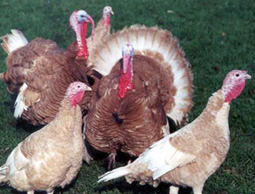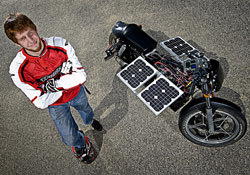
Photo by Rick Gush
The broccoli from our garden is, oh, so delicious!
Some things are going along just as planned, and today we ate our first broccoli from the garden. The really fresh stuff looked pretty good, but after being steamed for a few minutes it turned a ridiculously bright green that just radiates health.
I don’t eat broccoli because I think it’s healthy for me—I eat it because I like the way it tastes. Sometimes I put mustard on it, sometimes balsamic vinegar, and sometimes I use horseradish. My wife likes hers with lemon juice. She will also make a few vegetable-cheese pies with the broccoli, and that’s really tasty, too.

Photo by Rick Gush
We don’t enjoy the tast of broccoli Romana as much as the green variety.
Of the 100 broccoli plants we put in the soil, only a very few are struggling, and the rest are big sprawling monsters. The trunks on the harvestable heads are 2 or even 3 inches thick, and I eat the trunks as willingly as I do the flowers. One bed still has a lot of snail damage, but there are no cabbage worms yet. I’ve seen a few cabbage moths, so I’m sure the worms will arrive at some point. But I can’t really keep spraying the Bacillus because it’s raining so often.
Of the 100 plants, almost half of them have harvestable heads. My mother and sister-in-law are always happy to get our broccoli, so we’ll harvest some for everybody this week and let the rest grow bigger. Really, the goal is not a bunch of the big heads, but more a field from which we can pick the smaller sprouts from now until March. Although the big heads are impressive, the total number of small sprouts will be probably four times the weight of the big heads.
We did plant a few other cole crops, like Brussels sprouts, cabbage, cauliflower and broccoli Romana, but it’s the green broccoli that are really doing the best at this moment. The Romana variety of broccoli looks really nice, but we don’t like the taste as much. It tastes more like cauliflower, but mealier. They sell a lot of the yellow broccoli in the market though, so somebody must like it.
It has been raining here a lot lately, and I’ve been so busy with the remodeling of the new office, I haven’t worked at all in the garden for several weeks now. I miss that activity, and this morning when I took the broccoli pictures I felt somehow guilty that I wasn’t taking proper care of this wonderful asset of ours. But even in my protracted absence, the garden seems to be dong just fine. There are a lot of lowers blooming, the lettuce and fava beans are all growing bigger, and some of the citrus are blooming again.













